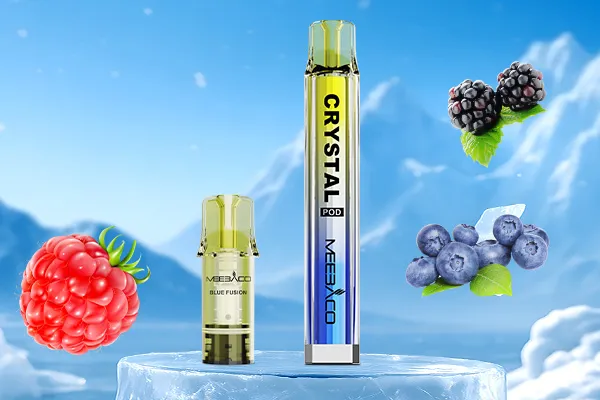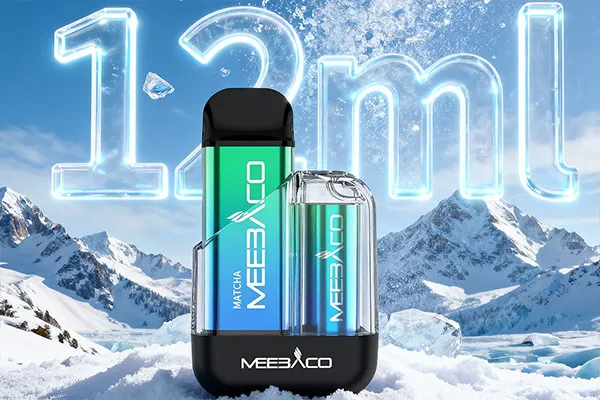You can master the latest information, new product , exhibition, promotion, etc
The global e-cigarette industry has witnessed remarkable growth, driven by evolving consumer preferences for reduced-harm alternatives and continuous technological innovation. As two dominant technical routes, Heat-Not-Burn (HNB) and vaporizer e-cigarettes have carved distinct niches in the market, each with unique operating principles, user experiences, and regulatory landscapes. With the global e-cigarette market size projected to reach $60.31 billion in 2025 and soar to $120 billion by 2034, understanding the strengths, weaknesses, and competitive dynamics of these two technologies has become crucial for industry players and investors alike . This article delves into a comprehensive comparison of HNB and vaporizer e-cigarettes, followed by insights into their future market competition.
What Are Heat-Not-Burn (HNB) Technologies?
Heat-Not-Burn (HNB) technology operates on the principle of heating tobacco or herbal substrates to a temperature range of 300-350°C, below the combustion point of traditional cigarettes (which typically burn at 600°C or higher) . Unlike conventional smoking, this low-temperature heating process releases nicotine, flavor compounds, and aerosols without producing smoke, ash, or significant tar. HNB devices require specialized substrates—either tobacco-based or herbal formulations with added nicotine—to deliver a smoking experience closely resembling traditional cigarettes . The technology is classified as a tobacco product in most regions, placing it under stricter regulatory frameworks similar to traditional cigarettes.
What Are Vaporizer E-Cigarette Technologies?
Vaporizer e-cigarettes, commonly known as vaping devices, work by heating a liquid (e-liquid) composed of propylene glycol, vegetable glycerin, nicotine (in varying concentrations), and flavorings . The heating element vaporizes the e-liquid, producing an aerosol that users inhale. These devices come in diverse forms, including disposable, pod-based, and open-system models, offering flexibility in usage and customization . Unlike HNB, vaporizer e-cigarettes do not contain tobacco, positioning them as separate products in regulatory classifications—though their oversight varies significantly across countries . Recent technological advancements have led to innovations such as smoke-free e-liquids that avoid triggering smoke alarms, expanding their applicability in public spaces.
Pros and Cons of HNB Technology
Advantages
Reduced Harm Profile: HNB technology reduces the release of harmful substances by 90-95% compared to traditional cigarettes, as the absence of combustion minimizes the formation of tar, carbon monoxide, and polycyclic aromatic hydrocarbons . This makes it a compelling alternative for adult smokers seeking to reduce health risks.
Authentic Smoking Experience: The heating of tobacco or herbal substrates delivers a flavor, throat hit, and ritual closely aligned with traditional smoking, resulting in high conversion rates among long-term smokers.
Strong Industry Backing: Global tobacco giants are heavily investing in HNB, with major players targeting significant revenue shares from smoke-free products by 2030 . This support drives continuous technological refinement and market expansion.
Established Market Traction: HNB has achieved substantial penetration in key markets, with Japan leading at 48% penetration in 2025, demonstrating strong consumer acceptance.
Disadvantages
Strict Regulatory Scrutiny: Classified as tobacco products in most regions, HNB faces stringent regulations on sales, marketing, and packaging—including flavor restrictions and high taxation. Some countries have imposed outright bans, limiting market access.
Higher Cost Barriers: HNB devices and specialized substrates are generally more expensive than vaporizer e-cigarettes, creating a barrier for price-sensitive consumers.
Substrate Dependence: The technology relies on proprietary or specialized substrates, restricting user choice and creating supply chain dependencies.
Residual Health Risks: While less harmful than traditional cigarettes, HNB still produces ultrafine particles, nicotine (which is addictive), and secondhand aerosols, raising ongoing public health concerns.

Pros and Cons of Vaporizer E-Cigarette Technology
Advantages
Affordability and Accessibility: Vaporizer devices and e-liquids are available at a wide range of price points, making them accessible to a broader consumer base . Disposable models offer low-entry costs, while reusable devices provide long-term value.
Diverse Customization: E-liquids come in numerous flavors, nicotine strengths, and formulations, allowing users to tailor their experience . Technological innovations, such as smart devices with adjustable settings, further enhance customization.
Global Market Dominance: Vaporizer e-cigarettes hold the largest share of the global e-cigarette market, with a projected size of $38.7 billion in 2025 . Strong export performance—particularly from major manufacturing hubs—fuels global availability.
Technological Flexibility: Rapid innovation has led to improvements in battery life (extending to 500 cycles with nano-coating technology), atomizer durability, and smoke-free formulations, addressing key user pain points.
Disadvantages
Regulatory Uncertainty: Vaporizer e-cigarettes face inconsistent global regulations, with some countries imposing flavor bans (e.g., Europe restricting non-tobacco/menthol flavors) or limiting sales channels (e.g., Australia requiring pharmacy sales).
Health Concerns: E-liquids may contain potentially harmful compounds, including trace carcinogens, heavy metals, and toxic flavoring agents—particularly in low-quality products . Long-term health effects remain under study.
Youth Appeal Controversy: The wide range of flavors and sleek designs have raised concerns about youth initiation, prompting stricter age-verification requirements and marketing restrictions in many regions.
Illicit Market Challenges: Loose regulation in some regions has led to a thriving illicit market for untested, low-quality vaporizer products, undermining consumer trust and legitimate sales.
Future Competition Forecast
Regulatory Landscape as a Key Driver
Regulatory policies will continue to shape the competitive balance between HNB and vaporizer e-cigarettes. HNB’s classification as a tobacco product will limit its growth in regions with strict tobacco controls, while vaporizers may benefit from more flexible regulations in some markets—though flavor bans and sales restrictions could hinder expansion . Countries adopting "harm reduction" frameworks may favor HNB, while those prioritizing youth protection may impose stricter rules on vaporizers.
Market Growth Trajectories
Vaporizer e-cigarettes will maintain their dominant market share in the near term, driven by their affordability, customization, and established global supply chains . The segment’s growth will be fueled by emerging markets and technological innovations like smart devices and smoke-free e-liquids . HNB, however, is poised for accelerated growth in mature markets with high smoking rates and favorable regulatory environments—particularly in Asia and Europe—supported by tobacco giant investments and rising consumer awareness of reduced-harm alternatives . Global HNB penetration, currently around 6%, is expected to grow at an annual rate of 10-20%.
Technological Innovation as a Competitive Edge
Both technologies will compete on technological advancements. HNB manufacturers will focus on improving device portability, heating efficiency, and substrate diversity to enhance user experience . Vaporizer makers will prioritize safer e-liquid formulations, longer-lasting batteries, and Intelligent features (e.g., usage tracking, temperature control) to differentiate their products . The development of smoke-free and low-emission technologies will be a key battleground, as both segments seek to expand usage scenarios (e.g., public spaces, workplaces).
Consumer Preference Shifts
Consumer demographics will influence competition dynamics. HNB will likely retain appeal among older, traditional smokers seeking a familiar experience, while vaporizers will continue to attract younger users and those prioritizing customization and affordability . As health awareness grows, both segments will need to emphasize safety and transparency to maintain consumer trust—particularly amid ongoing debates about long-term effects.
Conclusion
Heat-Not-Burn (HNB) and vaporizer e-cigarettes represent two distinct, evolving technical routes in the global e-cigarette market, each with unique strengths, weaknesses, and growth drivers. Vaporizer e-cigarettes dominate today’s market through accessibility, customization, and technological flexibility, while HNB is gaining traction in mature markets with its authentic smoking experience and strong industry backing. The future competition will be shaped by regulatory policies, technological innovation, and shifting consumer preferences—with no single technology emerging as a universal winner. Instead, the market will likely see regional segmentation, with HNB thriving in tobacco-friendly regulatory environments and vaporizers leading in regions prioritizing affordability and customization. As the industry matures, both segments will need to address health concerns, comply with evolving regulations, and innovate continuously to capture growth opportunities in the $120 billion global market projected by 2034 .









